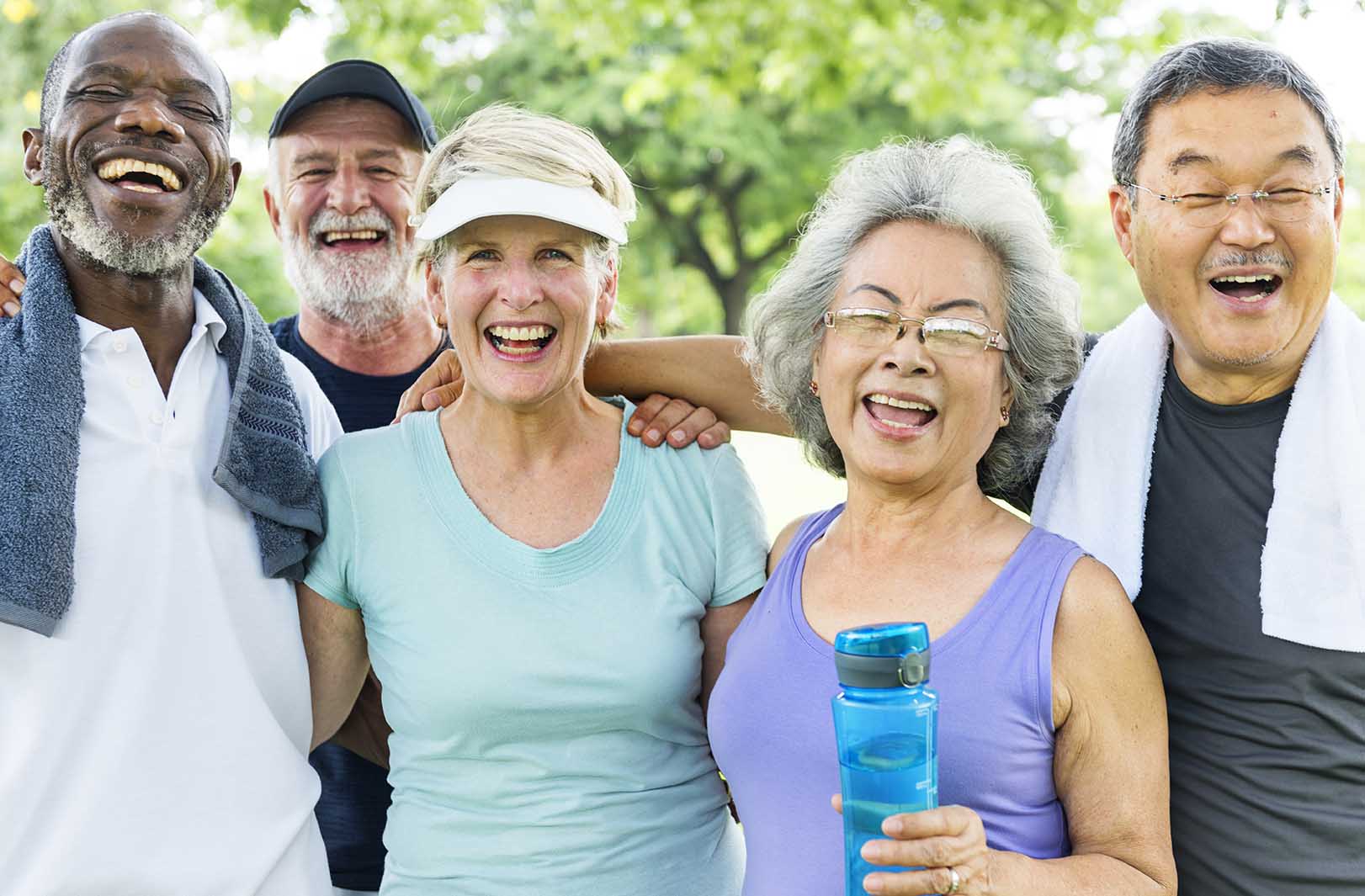
Why should seniors exercise?
As we get older, it’s important to stay active and practice healthy lifestyle habits. Seniors who exercise regularly are more likely to maintain mobility as they age, which promotes independence. A stronger, healthier, more active body is also able to fight off illness and recover from injury better than a sedentary one.
The basic benefits of exercise for seniors include:
- Better mobility
- Better balance
- Increase muscle strength
- Increased energy levels
- Elevated mood
- Strengthened immune system
Whether you are looking for a workout routine for yourself or you want to help a loved one stay healthy, our list of the best home exercises for seniors is an easy place to start.
Remember, before starting a new exercise plan, speak to your doctor first.
How can seniors with mobility issues get regular exercise?
The benefits of regular exercise are clear, however, it is equally important that adults over the age of 65 follow a workout plan designed with their individual physical limitations in mind. While these limitations vary depending on age and personal circumstances, most experts advise people of all ages to adopt a fitness routine that prioritizes balance over intensity. Seniors in particular need to be careful they are not overexerting themselves or putting undue stress on their bodies, or they could do more harm than good.
This can be difficult if you already have limited mobility due to age. Generally, heavy weight training, running, pushups and setups, as well as other popular forms of exercise are too strenuous for seniors, especially those who have illness or injury that affects their coordination or movement.
If you suffer from joint pain, back pain, arthritis, and other conditions that affect how you can safely and comfortably exercise, or if you live in an assisted living facility with limited access to workout equipment, you may need help finding an effective routine that you can complete on a consistent basis.
Likewise, if you have a loved one who is affected by any of these conditions, you need to consider low-impact options when helping them stay fit and active.
Home Workouts for Seniors
The following exercises are excellent choices for seniors who have limited access to workout equipment, or for those who simply prefer to work out at home.
- Walking
- Yoga
- Tai Chi
- Body weight workouts
- Resistance band training
These exercises are low-impact and easy on the joints, but still help develop and maintain strength, balance, coordination, and overall health.
Walking
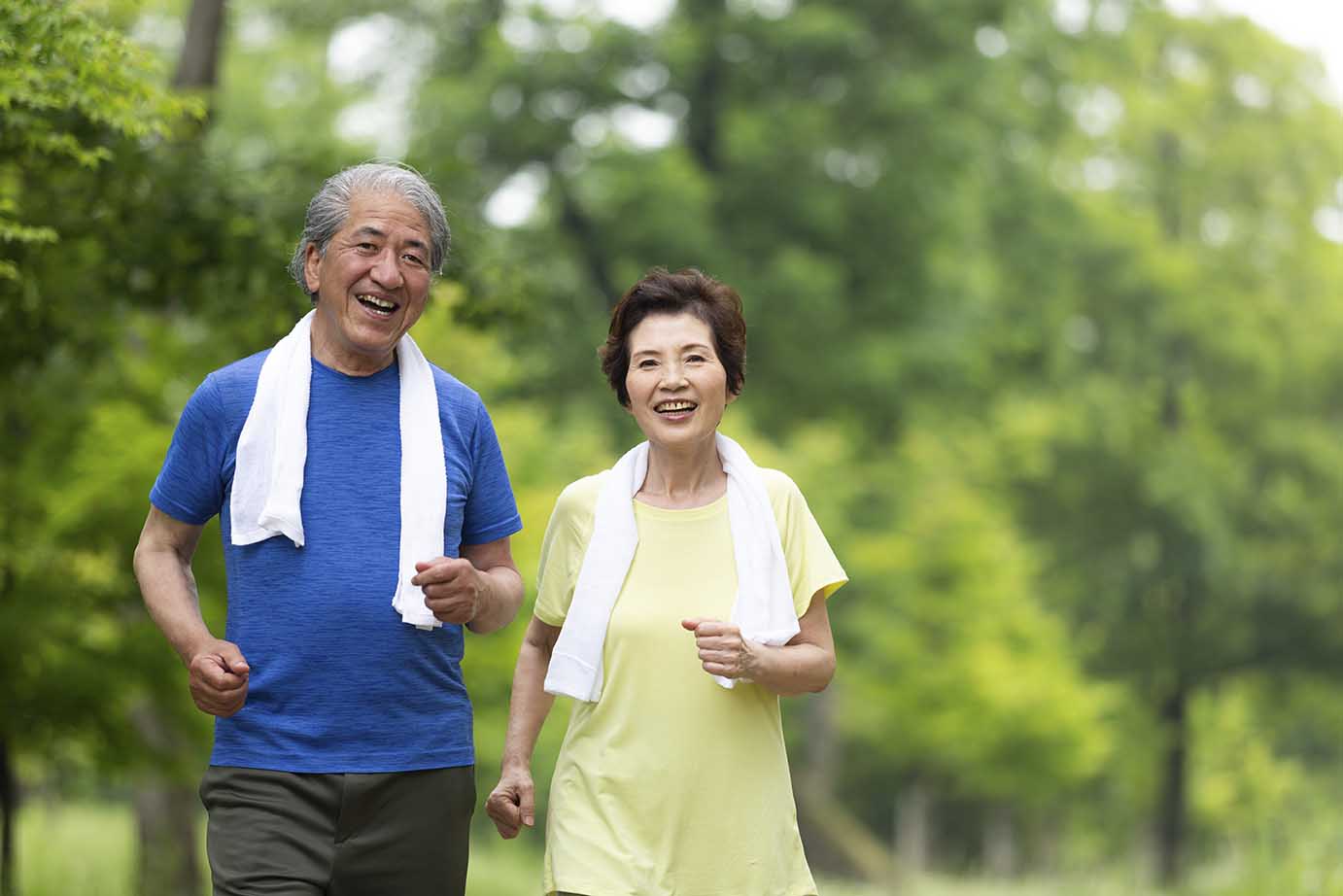
Whether you hit the trail, the treadmill, or the sidewalk, it’s hard to beat walking as a gentle but effective way to maintain health and mobility. If this is your or your loved one’s preferred form of fitness, you may want to keep that in mind when choosing a place to live, especially if you will be moving into a nursing home. Close proximity to walkable sidewalks, walking paths, or parks makes keeping up with exercise easy. Some assisted living facilities even have well maintained grounds with outdoor walking areas that are intended for resident use.
If you do not live in an area where you can easily take a walk outdoors, you may wish to purchase a treadmill instead. Many affordable models exist that are designed to take up as little space as possible, and there are options that are specifically designed to be easy on the joints and knees. You can also travel to a nearby trail or park, but be sure to research its difficulty level beforehand. Some seniors may be able to handle unpaved trails, uphill walks, and other difficult terrain, while others may need to take those things into consideration.
A simple 15 to 30 minute walk at least three times a week can go a long way in promoting lower body strength and heart health. Even if you use a cane or a walker, this is an accessible form of exercise as long as you can access an appropriate walking area.
Yoga
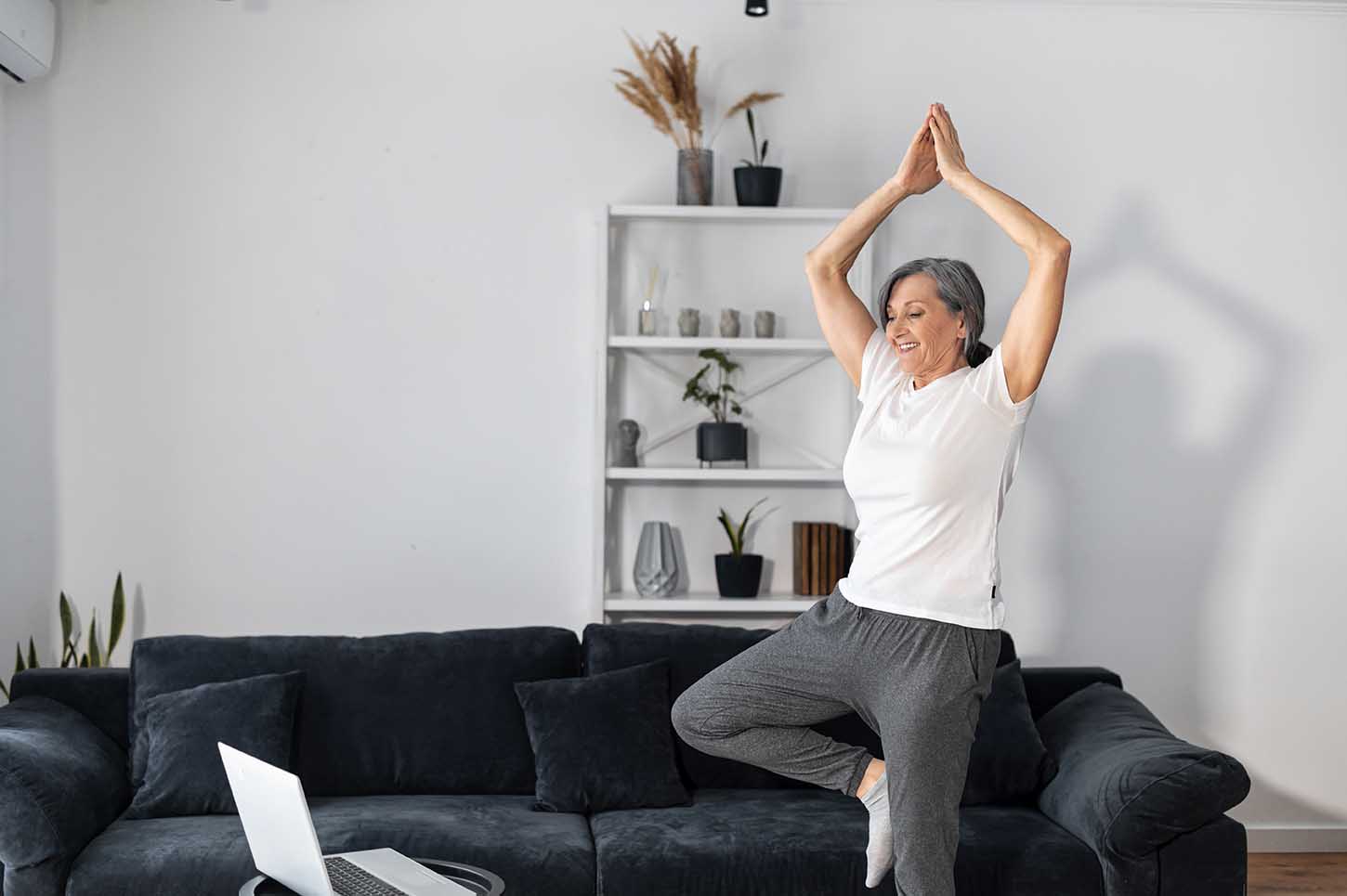
While those with limited mobility might be intimidated by yoga, this form of exercise can be easily adapted to fit different levels of flexibility and comfort. Practicing simple yoga techniques can strengthen muscles and improve coordination and balance. For most seniors, yoga should be about slow, gentle stretching, not demonstrating advanced flexibility.
There are many resources that demonstrate basic yoga poses and explain how to modify them to fit your age and comfort level. Some older and disabled people practice yoga while sitting down, or they will only practice with the assistance of another person to help them balance, so it is an excellent option if you are looking to help a loved one on their fitness journey.
If you have muscle or joint issues, do not push yourself to the point of pain. Simply do the poses the best you can, and your flexibility may improve over time.
Yoga can help you improve flexibility and balance and strengthen your core muscles. Additionally, yoga’s focus on breathing and meditation may have positive effects on mental health and stress levels.
Tai Chi
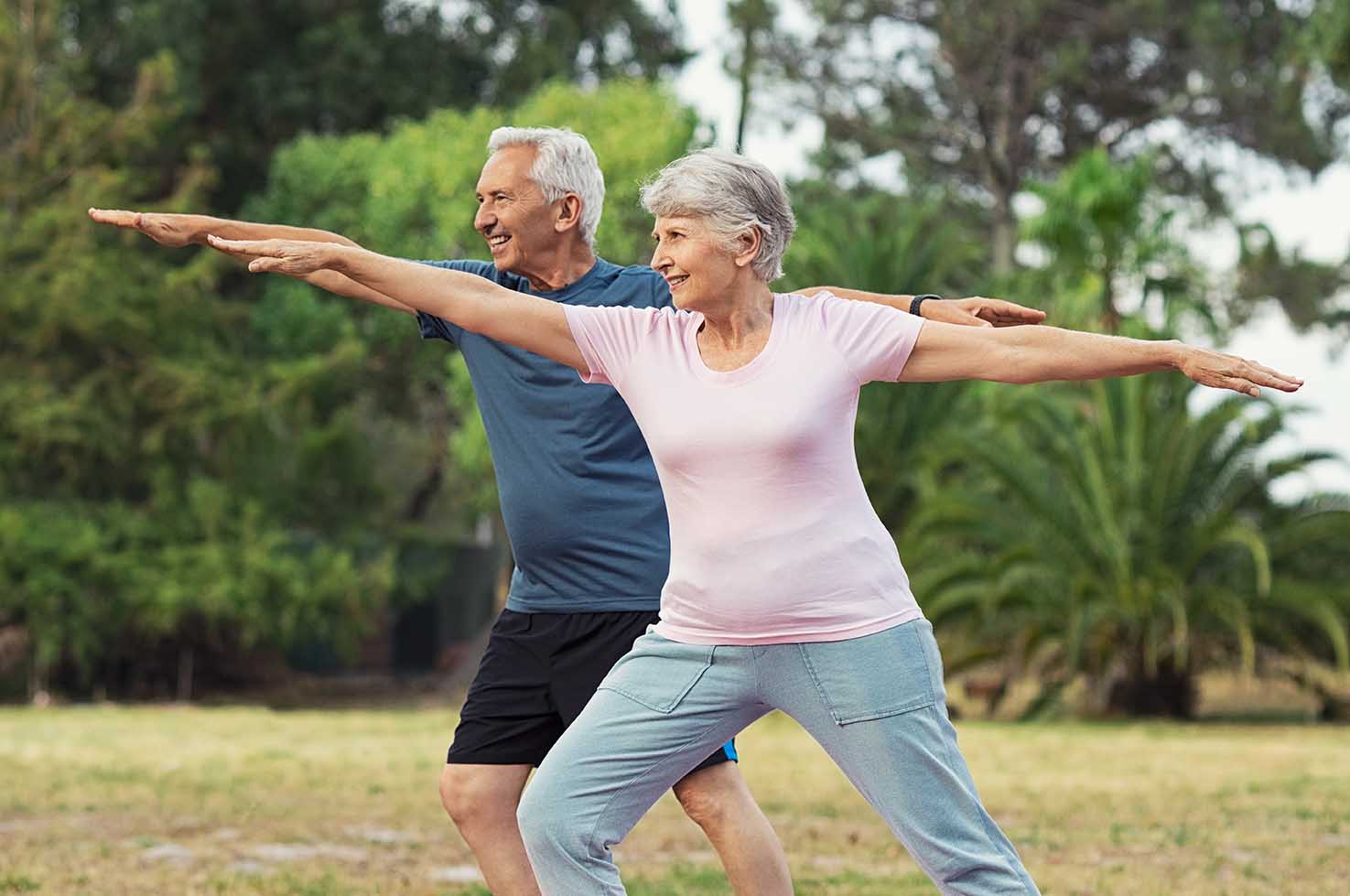
Similarly to yoga, tai chi’s focus on deep breathing and controlled, fluid movements makes it a great low-impact exercise that can also promote relaxation. However, it is easier to practice than yoga for seniors with limited flexibility.
Tai chi is traditionally a Chinese martial art that many instructors have adapted into a workout that focuses purely on health and wellness rather than self defense. Practitioners assume different poses and go through coordinated sets of movements that utilize the entire body, including the core. While some tai chi exercises can be practiced with two people working together, others can be done completely independently, outside or indoors. Like yoga, some movements can also be done seated.
If you are interested in trying tai chi at home, there are many free online resources available for seniors.
This activity improves coordination, balance, and flexibility, and can help strengthen your muscles.
Body Weight Workouts
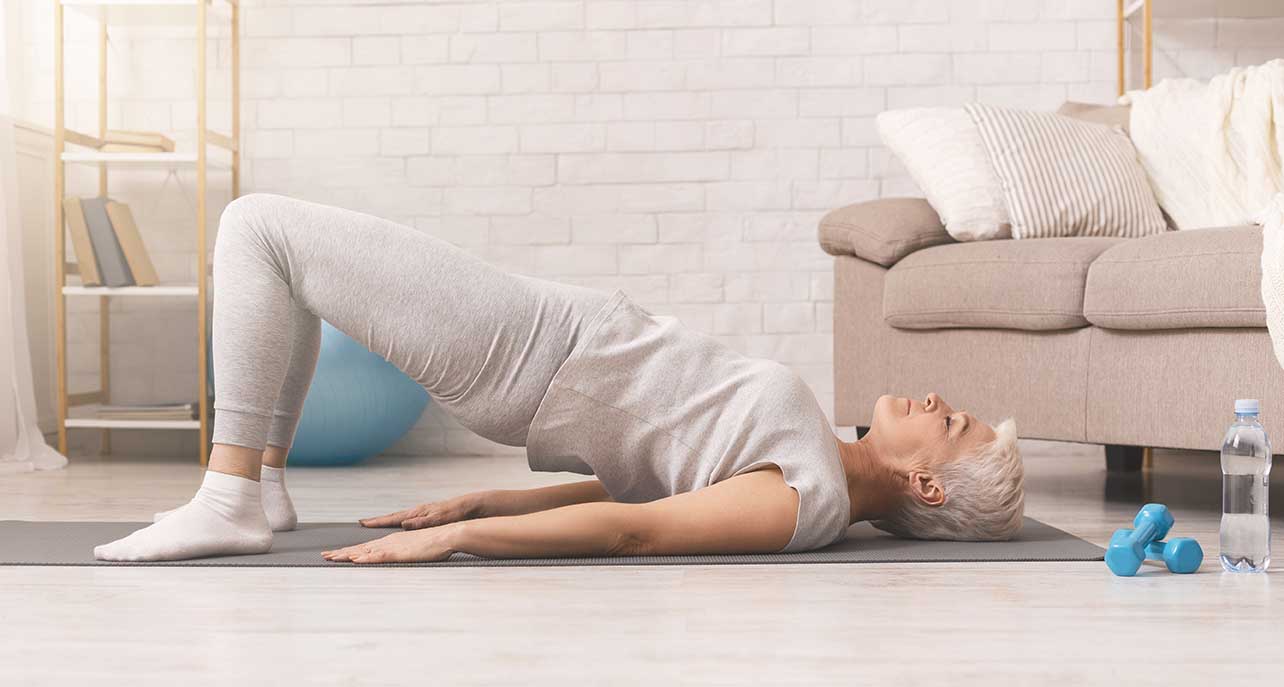
Weight training and pumping iron isn’t the only way to strengthen your muscles. Seniors with muscle or joint pain can use their body weight to their advantage, using it to build or maintain muscle without the serious risk of injury that comes with lifting heavy weights.
Doing callisthenic exercises that are tailored to your physical ability is a great way to safely strength train. While some more strenuous exercises – like pushups, pullups, and sit ups – might not be possible for certain seniors due to arthritis, these moves can be adapted so they are safer and less intense. For example, you may try wall pushups, chair squats, or standing crunches, or you can stick to simple, low impact movements that will still offer a good workout and that focus on strengthening muscles with gentle, repetitive movements.
Breaking a sweat is normal when completing these kinds of exercise, but remember not to overexert yourself or use fast, sporadic movements.
Resistance Band Training
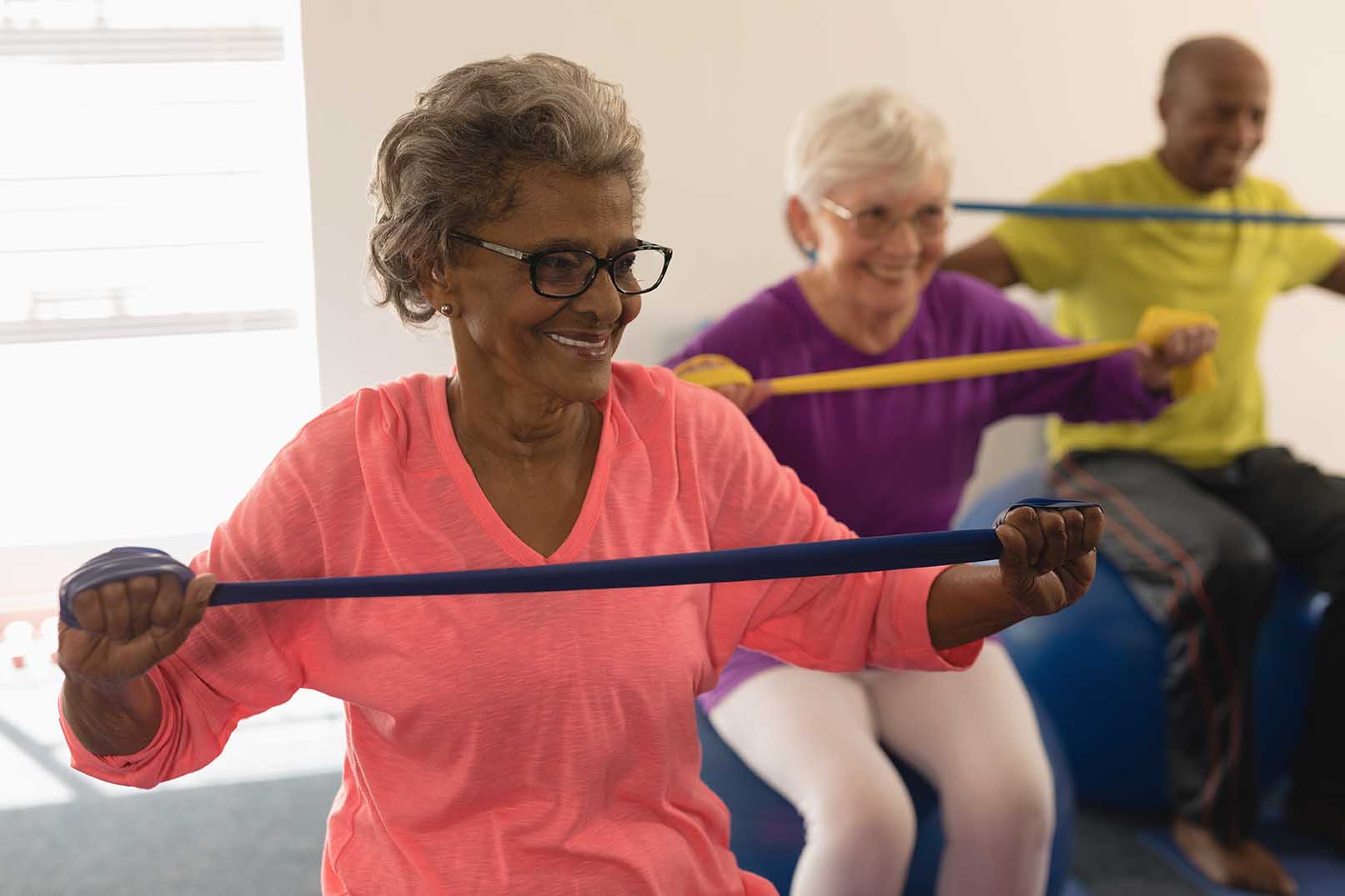
Another alternative to weights is resistance bands. These stretchy, elastic bands are affordable, effective, and don’t take up much space.
Resistance bands offer just that : Resistance. They can help you build muscle and strength in controlled way.
How can I start working out as a senior?
Talk to your doctor or preferred health care provider before starting any new exercise plan. They will give you guidelines that take your exact health issues – including ones that may affect your ability to exert yourself – into account.
After getting cleared by your doctor, it’s a great idea to speak with a personal trainer or fitness instructor even if you plan on exercising for the most part at home. A session or two with a trainer can show you how to perform movements and exercises correctly so when you work out home you prevent unnecessary injuries.





